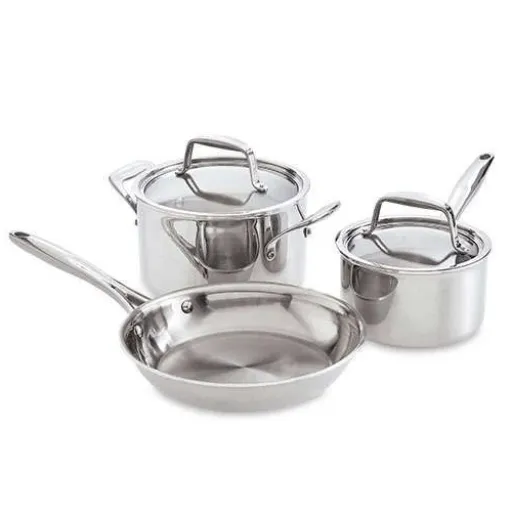Choosing flatware for your dining table can be a confusing process, especially if you come across the numbers “18/0” and “18/10” that seem to be codes. Actually, these numbers are the key factors to the quality, durability, and appearance of stainless steel flatware, thus they should be considered in your decision-making process. The main goal of this article is to explain the differences, advantages, and the best way to go about stainless steel flatware selection for your home among the different varieties of 18/0, 18/10, etc. Whether your intention is to buy daily-use utensils or fine flatware for festive occasions, the comprehension of these distinctions will guarantee that you end up with the pieces that suit your needs and taste. Join us as we take you through the entire spectrum of what you need to know regarding these stainless steel classifications.
Getting to Know Stainless Steel Flatware
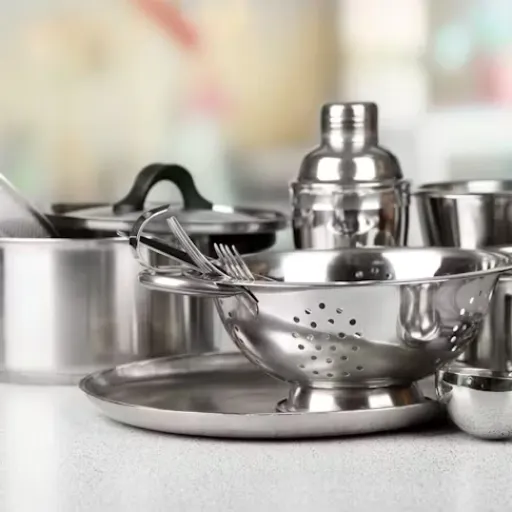
What is Stainless Steel Flatware, Anyway?
Stainless steel flatware is composed of the good quality utensils like forks, knives, and spoons made of stainless steel, an alloy of metals that is tough and has a high resistance to rust, corrosion, and staining. The main reason for using this material in flatware is its power, longevity, and ease of maintenance. Iron, chromium, and sometimes nickel are the main elements in stainless steel production. The metal’s durability against corrosion is due to chromium, while nickel gives it a smooth and shining quality, thus creating a classy and gleaming flatware.
In the market, stainless steel flatware is often classified according to a numeric composition code like 18/0, 18/8, or 18/10. The numbers denote the percentage of chromium and nickel used in the alloy. As in the case of 18/10 stainless steel, both 18% and 10% respectively stand for chromium and nickel, while in 18/0, it is 18% chromium with none of the nickel. This difference not only affects the production costs but also determines the performance characteristics. Choosing the 18/10 flatware with the higher nickel content means getting more durability, rust resistance, and a brighter finish. On the other hand, 18/0 flatware without nickel is cheaper but users have to tolerate the degradation of its quality in terms of tarnishing or lack of luster resulting from frequent use.
Composition of 18/0 and 18/10 Stainless Steels
18/10 Stainless Steel
The mixture comprises of 18% of chromium and 10% of nickel. Chromium makes it almost impossible to rust and corrode which is a must for flatware to last long. Adding 10% of nickel makes the alloy more shiny and stronger, thus, the reinforcement of 18/10 flatware with its trademark luster & durability. It hardly ever loses its shining quality which keeps it grand for not only formal dinner but also frequent usage. Companies are now confirming through statistics that 18/10 stainless steel is still the most liked alternative in the premium flatware market owing to its ability to hold a good appearance for a long time.
18/0 Stainless Steel
This steel has no nickel (0%) and thus its cost is lower than 18/10 brands. This alloy’s main component is 18% chromium which guarantees good corrosion resistance. Even though it does not shine as much and wears away as slowly as its 18/10 counterpart, 18/0 is still a practical option for casual eating and low-price households where the look is not so demanding. The only thing that it has is less resistance to wear and tarnishing so that it can be comfortably used in less demanding situations like schools or at home for occasional purposes.
Types of Stainless Steels in Flatware
The moment I consider the issue of stainless steel flatware, I pay the most attention to the practicality and the budget. For informal dining, 18/0 stainless steel is suitable even though it is more likely to get dull and suffer minor spots. Its low resistance means that it can be used for less demanding purposes such as occasional cooking at home or in a cafeteria where aesthetics do not come first.
Differences Between 18/0 and 18/10 Stainless Steel
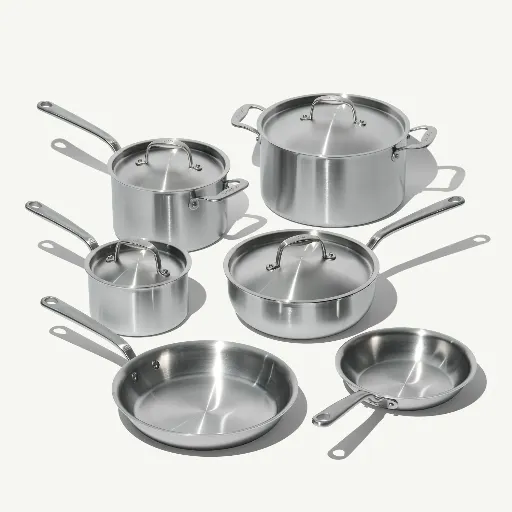
| Feature | 18/0 Stainless Steel | 18/10 Stainless Steel |
|---|---|---|
| Composition | 18% chromium, 0% nickel | 18% chromium, 10% nickel |
| Corrosion Resistance | Good resistance but prone to staining if not dried immediately | Excellent resistance, even in humid or wet areas |
| Shine & Luster | Less shiny, easier to dull over time | High luster, maintains polished finish |
| Durability | Easier to stain, scratch, and dull | Superior quality, long-lasting with excellent resistance |
| Magnetic Property | Magnetic | Non-magnetic |
| Price | Less expensive, budget-friendly | Premium price |
| Best For | Casual use, cafeterias, cost-efficiency settings | Formal settings, frequent use, everyday dining |
18/0 Stainless Steel
In 18/0 stainless steel, 18% of chromium and 0% of nickel are present. It has a good resistance against corrosion but it is not as durable and shiny as 18/10. The lack of nickel makes it less expensive, although it is easier to stain, scratch, and dull. It is also magnetic, which could help in some situations like cafeterias or any place where cost-efficiency matters, where it is used casually.
18/10 Stainless Steel
Comprising 18% chromium and 10% nickel, 18/10 stainless steel is one of the strongest materials with excellent rust and corrosion resistance along with long-lasting shine and superior quality. It does not lose the polished finish or become less resistant with time and hence, it is suitable for formal settings or frequent use. Nickel contributes to its luster and gives it a luxurious look while at the same time, it is also non-magnetic. On the other hand, this high-quality and durable product comes at a premium price.
Corrosion Resistance in Stainless Steel Flatware
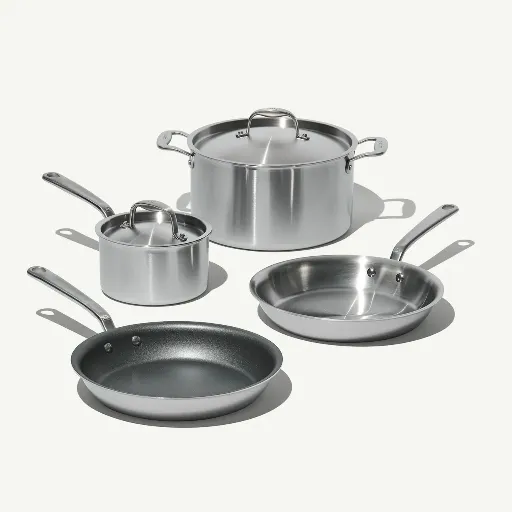
18/10 Stainless Steel
The corrosion resistance and luster of the flatware are both greatly improved with the addition of 10% nickel. By adding nickel to the protective oxide layer, the flatware can survive even the most extreme conditions like humid or wet areas very durably. Professional studies show that 18/10 stainless steel has the best resistance and can withstand even the most critical situations where moisture or acidic foods are present for long periods without any rust or staining being visible. Therefore it can be used every day and it is dishwasher-safe.
18/0 Stainless Steel
18/0 stainless steel which has no nickel content has the lowest corrosion resistance when compared to 18/10. The 18% chromium metal still offers some protection but it is very likely to suffer from rust and staining, especially if it is not dried immediately after washing. The cost-effective nature of 18/0 is often associated with the need to put in extra effort to keep it looking nice and functioning properly as a built-in-care feature.
Common Uses of Stainless Steel Flatware
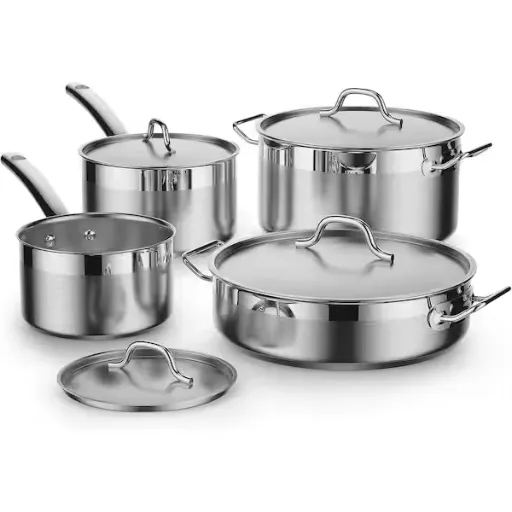
Stainless steel flatware is mainly used for dining, entertaining, and special occasions. The flatware’s long-lasting property combined with its easy maintenance gives it a place among the most practical choices for both everyday meals and more sophisticated settings.
Applications in Everyday Dining
Stainless steel flatware is a must in modern dining because of its multipurpose, longevity, and good-looking qualities. Its use is wide in both casual and formal dining settings, all due to its resistance to corrosion power and its ability to keep polished look even after a long time. Not long ago, industry data revealed that 18/10 stainless steel is the number one choice among luxury flatware makers because of its long-lasting and non-pitting resistance quality. This makes it appropriate for exquisite dinner parties and occasions where good looks are the most important factor.
On the flip side, the 18/0 stainless steel is a little more rust-resistant but not as the cost-efficient alternative for daily family use. This type of stainless steel is regularly used in school lunchrooms, eateries, and catering companies where large amounts of utensils are needed without spending a lot of money. The Cookware Manufacturers Association cites that the 18/0 flatware has a considerable share in the market across the globe mainly because of its low price and the ease of mass production.
Use in Restaurants and Catering Services
The stainless steel flatware especially the 18/10 and 18/0 grades have become widely accepted by restaurants and catering services for their durability, economic feasibility, and elegant appearance. Recently, the global flatware market size was estimated at $11.0 billion in 2022 and is anticipated to attain $17.2 billion by 2030, with a considerable portion of the demand coming from the hospitality sector. The lasting charm of stainless steel flatware is its capability to endure heavy and repetitive use while still looking polished at all times, hence, it meets the acute requirements of professional dining settings.
Stainless flatware for catering services gives the possibility to choose the table setting of the event. From casual to formal events, it could go with the whole table scenario. Its non-staining, non-rusting, and non-corrosive properties make it suitable for those environments where thorough and quick cleaning is the core of the matter. Furthermore, the eco-friendly practices in the industry are persuading companies to buy reusable tableware like stainless steel instead of paper or plastic ones to meet their green targets. An increasing number of restaurants and caterers see stainless steel flatware as a convenient and beautiful choice that provides both utility and elegance.
Stainless Steel Flatware Care and Maintenance Tips
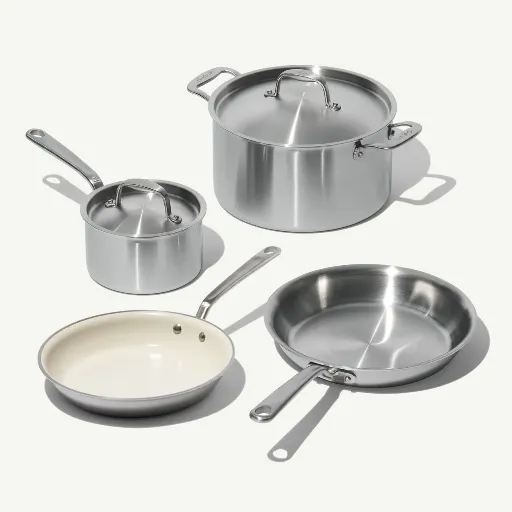
Washing stainless steel flatware immediately is my first action to stain prevention, and I also try not to use abrasive cleaners that can create scratches on the surface and finally, dry it very well which will ensure no water spots remain. Furthermore, I sometimes polish it to keep the shine and store in a dry place which will help prevent corrosion.
Cleaning Techniques to Ensure Long Life
Washing After Use Without Delay
Never let food remnants and residue from acidic food stay on the flatware for a long time as they are two of the main reasons for discoloration and even corrosion. Washing cutlery as soon as it is used prevents these problems.
Mild Detergent to Use
Strong chemicals or powerful cleaners may damage the chromium oxide layer that protects stainless steel. A soft, non-abrasive detergent is a good option whether washing by hand or in a dishwasher.
Dishwasher Safety
Generally, stainless steel cutlery can be washed in the dishwasher, but it’s recommended to keep flatware apart from items that may rust as that could transfer rust stains. The other thing is to avoid mixing too many things together which can cause scratches.
No Harsh Scrubbing Tools
It is always recommended to use a soft sponge or cloth for cleaning stainless steel flatware. Scouring pads or steel wool can create scratches on the surface, thus reducing its smooth finish and in turn, making it more stain-prone.
No Corrosion and Rust Allowed
Rinse the Flatware Immediately After Use
Food particles, especially the salty ones or the ones with an acid base, will encourage the corrosion process on the stainless steel surfaces. The latest advice from material scientists is that a quick rinse of the flatware under warm water will be effective in preventing the localized rust formation caused by these elements.
Thorough Drying is a Must
Moisture is the main cause of rust formation and hence one of the leading causes of rust. It has been found that water droplets trapped in the same spot can really create conditions that are conducive to rust forming, even in steel that is resistant to corrosion. Wiping the flatware with a soft towel immediately after washing will reduce the exposure to moisture.
Use Gentle Cleaning Agents
Abrasive or bleach-based cleaners can harm the stainless steel protective oxide layer. The National Association for Surface Finishing has reported that non-abrasive detergents are the safest for stainless steel, thus prolonging its life.
Future Trends in Stainless Steel Flatware
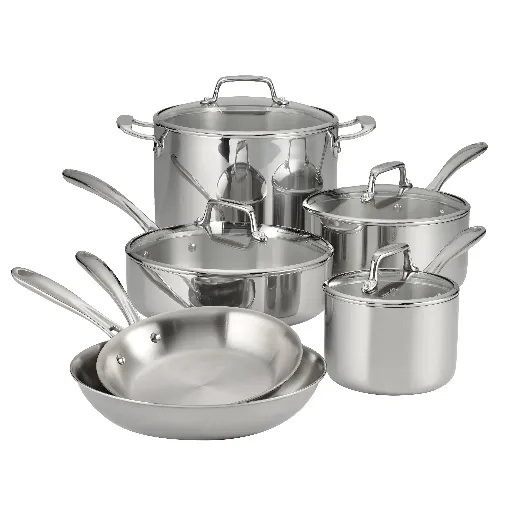
My expectation for the future trends in stainless steel flatware is the emphasis on sustainability and inventive designs. Producers would not only think about the eco-friendly production ways and recyclable materials, but also about making comfortable and beautiful utensils that meet the modern dining habits.
Innovative Designs and Technologies in Stainless Steel Flatware
The stainless steel flatware market is always coming up with new and nicer products plus new technologies. They cater to the beauty side and at the same time, to the functional side. Manufacturers are already starting to use laser cutting in their productions; they can make very detailed patterns giving the customers their names on the products and still not losing the strength of the product. For example, the laser-engraved designs make up almost 15% of the flatware market, proving that there is a growing consumer thirst for personalization.
The utilization of superior alloys and surface modification is another major development that has been declared. These steps, along with proper care, prevent the utensils from rusting and thus prolong their life. The utensils with brushed or satin-finish designs, for example, have become popular because of their resistance to scratching and their soft, modern look. New research reveals that satin-finished stainless steel flatware can keep its appearance 30% longer than conventional polished flatware in normal usage.
Sustainability in Stainless Steel Production
Sustainability has emerged as a major factor in the production of stainless steel, and thus, manufacturers are incorporating their creative ideas into the adoption of new practices to minimize the environmental impact. The main production of stainless steel is eco-friendly because it is strong, fully recyclable, and has a long life. Research indicates that approximately 80-90% of the total stainless steel production across the globe is recycled, ranking it among the most recycled materials worldwide. Hence there is no landfill that is increasing in size and there is less need for raw material extraction.
The modern steelmaking facilities are progressively shifting to using renewable energy sources and cutting-edge technology that would aid them in reducing their greenhouse gas emissions during the production process. For example, Electric Arc Furnaces (EAF), which is a method widely adopted in the steel manufacturing industry, is known to have much lower CO2 emissions compared to the traditional blast furnace method. The Steel Recycling Institute claims that energy savings of up to 33% can be achieved through the recycling of stainless steel in EAFs.
Reference Sources
-
Crystalia USA Blog
This source explains the differences between 18/10, 18/8, and 18/0 stainless steel, highlighting the common uses of 18/0 stainless steel in household items like flatware and kitchen tools.
Link to source -
SteelPro Group
This website provides a comprehensive overview of 18/0 stainless steel, including its definition, composition, properties, and common applications, making it a reliable source for understanding its practicality.
Link to source -
LSR Professional Blog
This blog discusses the meaning and differences between 18/8, 18/10, and 18/0 stainless steel, focusing on the affordability and practicality of 18/0 stainless steel for various uses.
Link to source
Frequently Asked Questions (FAQs)
What does the term 18/0 refer to in stainless steel grades?
The term 18/0 refers to stainless steel which comprises 18% chromium and is completely nickel-free, i.e. 0% nickel. This grade of stainless steel, due to its sturdy nature and corrosion resistance, has been favored along with other types of steel for making cutlery and flatware. Plus, it is easier on the pocket as compared to the other types of stainless steel, but it does not resist the rust completely like the higher nickel grades.
What is the role of chromium in the stainless steel flatware production?
Chromium is one of the most important elements in the process of stainless steel production, particularly in terms of the steel’s resistance to corrosion. In the case of 18/0, the 18% chromium enhances the surface by forming a protective oxide layer which keeps the steel rust-free and increases its life. On the other hand, the stainless steel grades such as 18/8 which contain both chromium and nickel, further develop resistance to corrosion and wear which makes them suitable for premium cutlery.
What is the reason behind the term “stainless” being associated with stainless steel?
Stainless steel is a term that describes a family of alloy steels with chromium content and their ultimate resistance against oxidation and rust. The 18/0 alloy, for example, has the 18% chromium and hence, its non-rusting ability; however, it may not be able to withstand the damage and other traits like the other grades with the presence of 8/10% nickel that provide even higher corrosion resistance.
What are the main distinctions separating 18/0 and other types of stainless steel flatware?
To put it briefly, the most noticeable difference between the flatware made from the 18/0 stainless steel and the 18/8 or 18/10 grades is the presence of nickel. In other words, while the 18/0 type does not have any nickel, the 18/8 variety contains 8% nickel, which makes it even more resistant and durable. Consequently, 18/8 and 18/10 stainless steel flatware are less prone to bending and wear compares to 18/0 which is often used for cheaper kitchen utensils.
What does the nickel percentage do to the quality of flatware?
The quality of stainless steel, hence the stainless steel flatware, is greatly influenced by the amount of nickel present in it. More specifically, nickel-rich grades like 18/8 or 18/10 offer much greater resistance to corrosion and also contribute to the overall toughness of the flatware. On the counter, the 18/0 type lacks nickel that may cause its rust-resistance and quality to drop; however, it still remains an option for the budget-conscious consumer.
Understanding the differences between 18/0 and 18/10 stainless steel flatware helps you make informed decisions that match your dining needs, budget, and aesthetic preferences. Whether you choose the budget-friendly 18/0 or the premium 18/10, proper care and maintenance will ensure your flatware serves you well for years to come.

